Leveraging Flutter App Development For Fintech App Innovation: Trends and Opportunities
26 May 23 

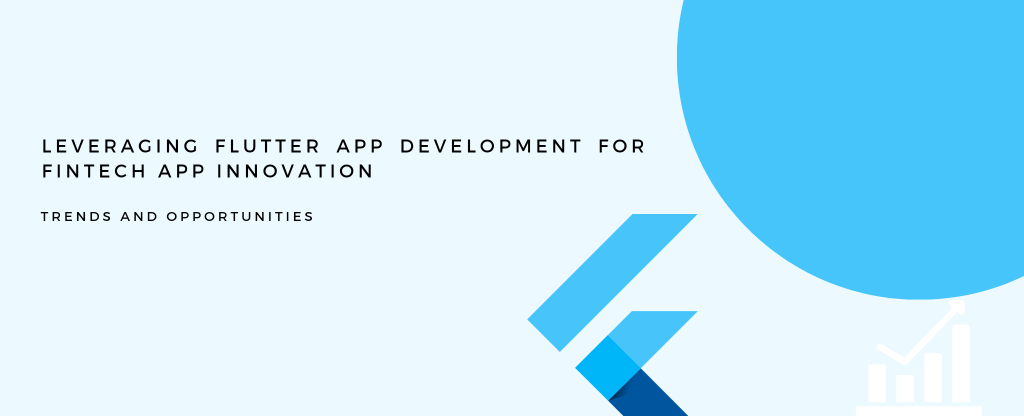
Companies are careful with the money they invest in their goods. This is due to the declining worldwide economy following a year of shocks from supply chain disruptions, the cryptocurrency market collapsing, and skyrocketing inflation.
These factors lead us to believe that Flutter app development will rank among the most significant developments in fintech app development by 2023. What makes us believe that?
We are certain that Google’s SDK provides the previously unheard-of potential to construct comprehensive, packed with features mobile banking and fintech apps after successfully creating a Flutter fintech app for a business customer from Asia.
Many banking and fintech firms must make the tough choice between deciding to expand, reestablishing or introducing a novel digital service as the economy approaches recession. So let’s talk about how developing Flutter finance apps might increase the likelihood of commercial success.
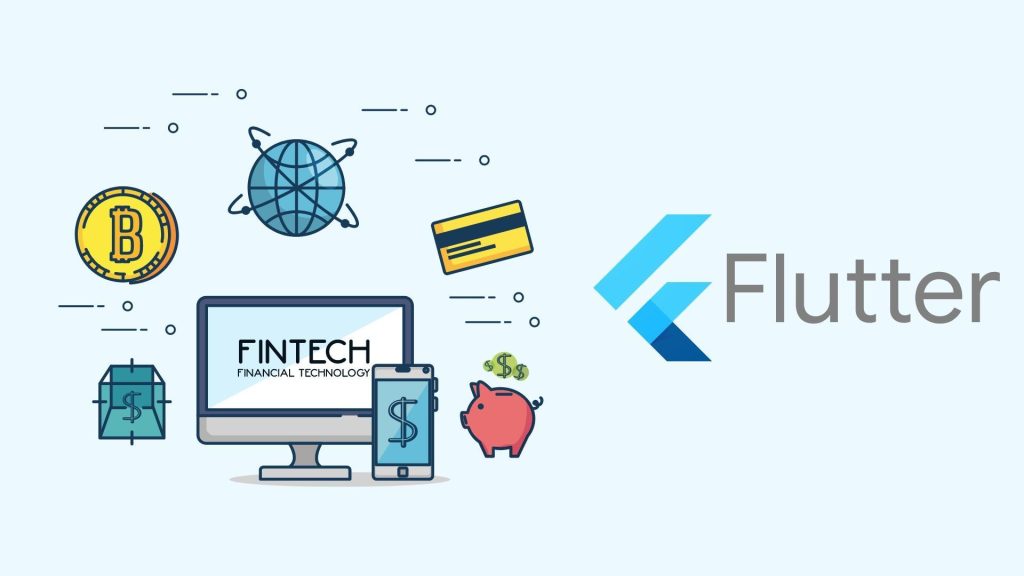
What is Flutter Framework?
A free software development kit from Google is called Flutter. It helps to build cross-platform software for embedded, online, and mobile applications.
Using Flutter, programmers can build a single codebase for apps that run on several operating systems, including Linux, Windows, Android, and iOS.
Instead of designing a separate app for every platform, developers may use Flutter to create cross-platform apps that run on several platforms.
The fact that Flutter isn’t a language for programming is to be made very obvious. It is a UI platform that utilizes the Dart programming language. It employs native user interface components that modifies while being developed.
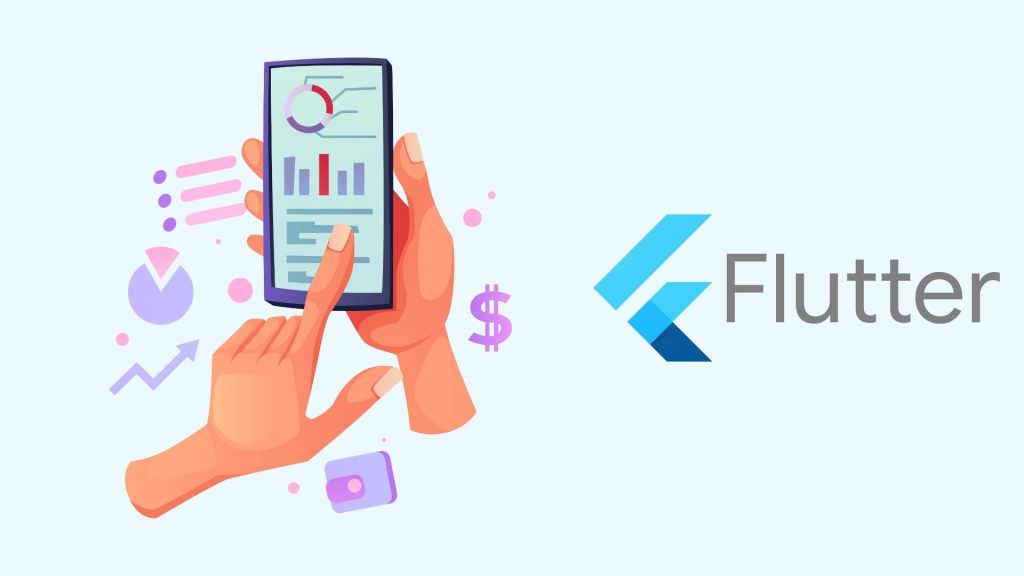
Why are Fintech Apps Trending?
Fintech applications are in great demand since they offer significant advantages to customers and financial organizations. Fintech is reshaping how we interact with banks and other conventional financial institutions by decreasing entrance barriers and altering attitudes.
The expansion of formerly unprofitable regions, such as consumer banking and low-margin business models, is possible by technology by serving less fortunate parts of the banking industry.
In exchange, more inclusivity fosters greater trust among consumers. Further, all of this takes place intending to give clients the best possible user experience, encouraging the creation of new fintech app trends.
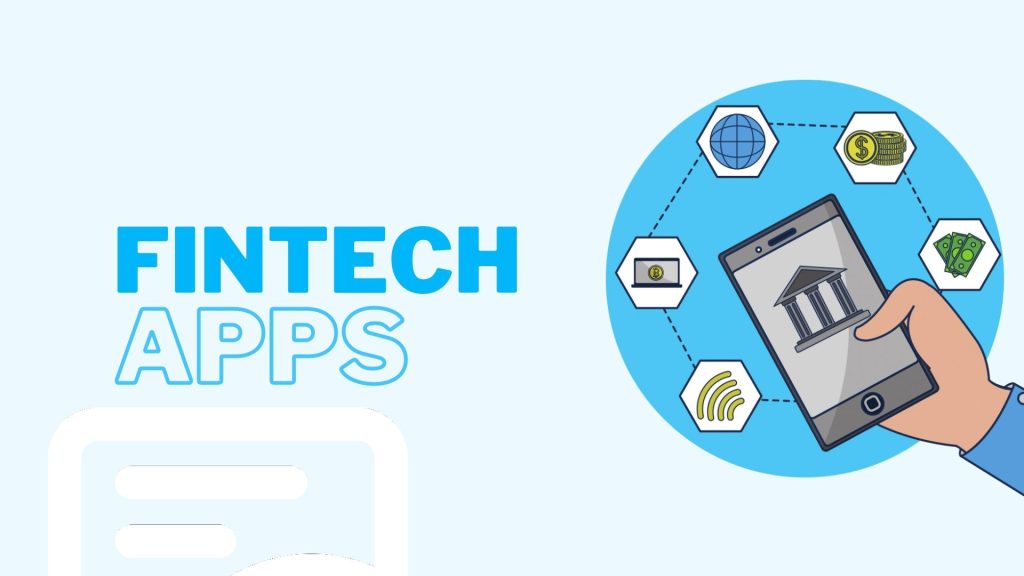
Reasons for Leveraging Flutter App Development for Fintech Innovation
Thankfully, businesses may now strike the tricky compromise between innovation and implementation through recent technological breakthroughs.
Flutter strikes the perfect balance between effectiveness and quality in this situation. Let’s talk about the benefits of the cross-platform strategy, notably for the financial services, fintech, and banking sectors.
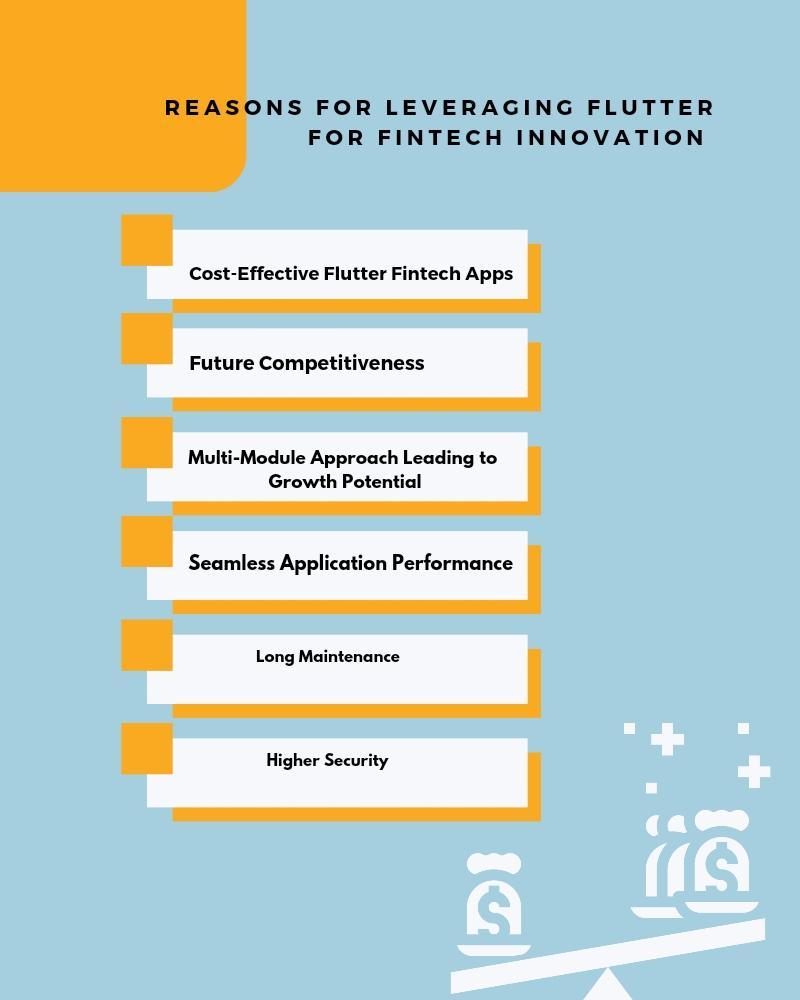
Cost-Effective Flutter Fintech Apps
One of the basic choices made when tackling the difficulty of developing fintech apps is selecting between native and cross-platform strategies. Cross-platform apps, especially those made using Flutter, are less expensive to produce than native apps.
Why are Flutter fintech applications worthwhile, though?
Each device utilizes its codebase when using the native method, which necessitates the usage of many specialized teams for the initial development of the programme and subsequent maintenance.
The native strategy has high fixed expenses and less adaptability when adding additional capabilities or modules. A brand-new solution, enhancement, or development must be created and put into practice for each gadget.
The development of banking and fintech applications simultaneously for Android, iOS, desktop, online, and wearables is possible with the cross-platform architecture Flutter.
The development team can quickly create a Flutter app due to the common codebase and large libraries of reusable parts. Two titans of the fintech sector, Google Play and NuBank, picked Google’s architecture because of how well it facilitates development.
But, as one noticed, Flutter is the ideal answer for big businesses and startups since it may save them millions of dollars.
Future Competitiveness
We are witnessing the framework transformation of Web 2.0 to Web 3.0 in front of our eyes. The current society is highly advanced and modernized, and digitalization influences people’s daily lives in all sectors.
In the banking and fintech industries, a successful, well-planned digital approach plays a more important role than it does in other industries. This is because users need extremely personalized services in an atmosphere of intense rivalry.
Using safely acquired and handled customer data, fintech and banking organizations should continuously create mobile and online apps.
Every small detail, fault, or delay can lead to an irrevocable setback in the digitized revolution at a time when clients can switch financial service providers swiftly and painlessly.
Multi-Module Approach Leading to Growth Potential
The ability to deploy a multi-module approach in the software architecture framework is one of the greatest important Flutter fintech app features for businesses with existing native banking or fintech apps.
Due to its multi-module design, Flutter enables developers to integrate cross-platform modules into already existing native apps. Fintech businesses may now swiftly deploy or test new functionality due to this.
The potential for a modular approach to the software structure in Flutter makes it possible to simultaneously construct several new, cutting-edge capabilities, especially in projects that need to scale and evolve fast.
In addition, the modular design of Flutter enables several teams to work on numerous functionality at once. Because of this, businesses who choose to use Flutter financial apps may create, test, and enhance new functionality far earlier than their native OS-based rivals.
Seamless Application Performance
Client satisfaction and retention of customers in banking and fintech apps directly impacted by efficiency.
The likelihood of losing clients increases with every passing second of delay and each unfinished application feature. Speedy content loading times and perfect service quality are essential in the financial and banking sectors.
Long Maintenance
The journey of a fintech or banking product doesn’t end when a module or application is made available to the general market. After an effective launch, it is crucial to keep up the program, respond immediately to any issues with its functioning, and track user responses.
The development of fintech and banking apps must be ongoing to maintain a competitive edge and perfect operation.
A crucial cross-platform benefit widely recognized and exploited is the ease of upkeep of Flutter-based finance and banking apps. For example, the developers of the ING Business app explicitly acknowledge that they chose Flutter for their significant project.
Higher Security
Securely handling sensitive data and interactions is essential in fintech and banking apps. For example, identity management, data protection, cybersecurity, and global and regional security regulations are important considerations for fintech organizations when creating mobile applications.
The integrity of the code must be ensured, along with paying attention to the appropriate application functionalities and verification strategies.
Additionally, as contrasted with native solutions, Flutter excels in this area. Why? Dart, the programming language, uses certain unique features that contribute to this.
Despite code obstruction, attackers can conduct reverse engineering on native apps to recover the original code. However, since Dart is immediately turned into machine code in Flutter, it is significantly harder to create reverse engineering tools.
Reverse engineering in Dart is comparatively understudied compared to native programming languages like Java used in Android. The Flutter code is less vulnerable to reverse engineering, which protects any Flutter fintech app.
How does Flutter App Development Improve Fintech App Development?
We are a top-class mobile app development company, integrating very advanced technology trends like Flutter to develop fintech apps.
This is one of the breakthrough technologies used by Google for app development. Now let’s explore the major reasons for using Flutter as the most prominent reason for fintech app development.
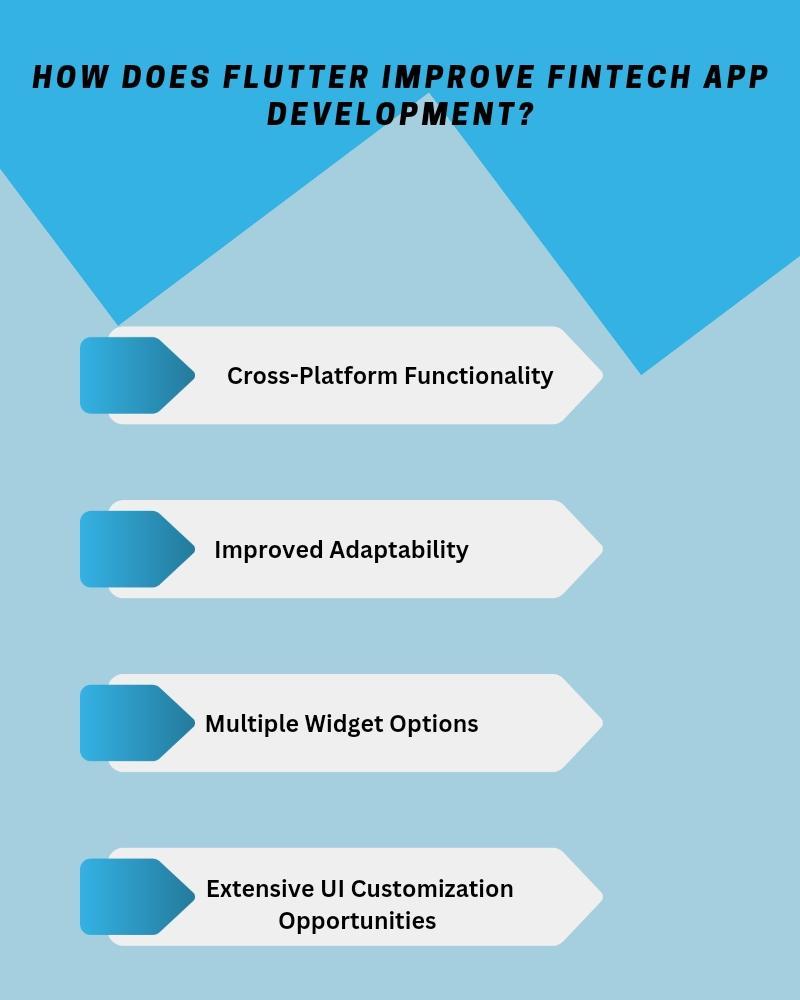
Cross-Platform Functionality
Flutter is frequently recognized as the greatest tool for creating apps that function across numerous platforms since it allows developers to build and launch sophisticated applications from a single code base.
Businesses eventually profit from greater efficiency, reductions in time, and a quicker launch of the good or service on the market. This is particularly important for fintech mobile apps that aim to remain current and innovative.
Improved Adaptability
With the help of Flutter, developers can create intuitive and snappy user interfaces. Adaptability is the basic thing offered, allowing businesses to update their apps without needing to begin over and redesign them.
In many years, businesses may have a productive strategy to save resources and time. Additionally, Flutter’s hot reload capabilities enable programmers to quickly loop through their code, making testing out novel capabilities much easier.
Multiple Widget Options
The essential elements of Flutter are widgets. They serve as fundamental components within the Flutter SDK and can cover almost every facet of software development.
Besides providing multiple prepared widgets, Flutter allows users to edit already-existing widgets or create entirely new ones.
This capability enables simple and useful ways to update an application in a quick-paced sector like the fintech sector.
Extensive UI Customization Opportunities
The notable benefit of employing a framework is that you may modify everything that appears on the monitor, regardless of how intricate it may be. As the fintech app development may require certain modifications at any stage, the use of Flutter helps to customize accordingly.
The amount of labor required varies significantly according to the customization sequence, even though it is frequently possible to build a highly personalized user experience on native platforms. Flutter, however, adds flexibility and variety to the process without raising the required level of work.
Why Flutter Fintech Apps are Worth?
Companies in the fintech and banking sectors are becoming more educated about the methods that allow for risk-free and economic concept validation.
Consequently, low- and no-code solutions are becoming increasingly popular, and cross-platform and Flutter-like platforms are becoming more and more common for mobile and web apps.
What are the main advantages of Flutter? First, the smooth, digitized banking era is closer with Flutter fintech apps. Flutter supports the advancement of novel online banking capabilities while maintaining an equilibrium between effectiveness, safety, and creativity.
With Flutter, businesses of all sizes—from industry heavyweights like Google Pay, Credit Agricole, ING Business, Nubank, or Nextbank to small fintech startups like Capital, Cheddar, Vosbor, or Fennel on Tap can create an app experience that feels seamless and native in comparison.
- Android Development3
- Artificial Intelligence27
- Classified App3
- Custom App Development2
- Digital Transformation11
- Doctor Appointment Booking App13
- Dropshipping1
- Ecommerce Apps38
- Education Apps2
- Fintech-Apps35
- Fitness App2
- Flutter3
- Flutter Apps19
- Food Delivery App5
- Grocery App Development1
- Grocery Apps3
- Health Care7
- IoT2
- Loyalty Programs9
- Matrimony Apps1
- Microsoft1
- Mobile App Maintenance2
- Mobile Apps120
- Product Engineering5
- Progressive Web Apps1
- Saas Application2
- Shopify7
- Software Development1
- Taxi Booking Apps7
- Truck Booking App5
- UI UX Design8
- Uncategorized4
- Web App Development1












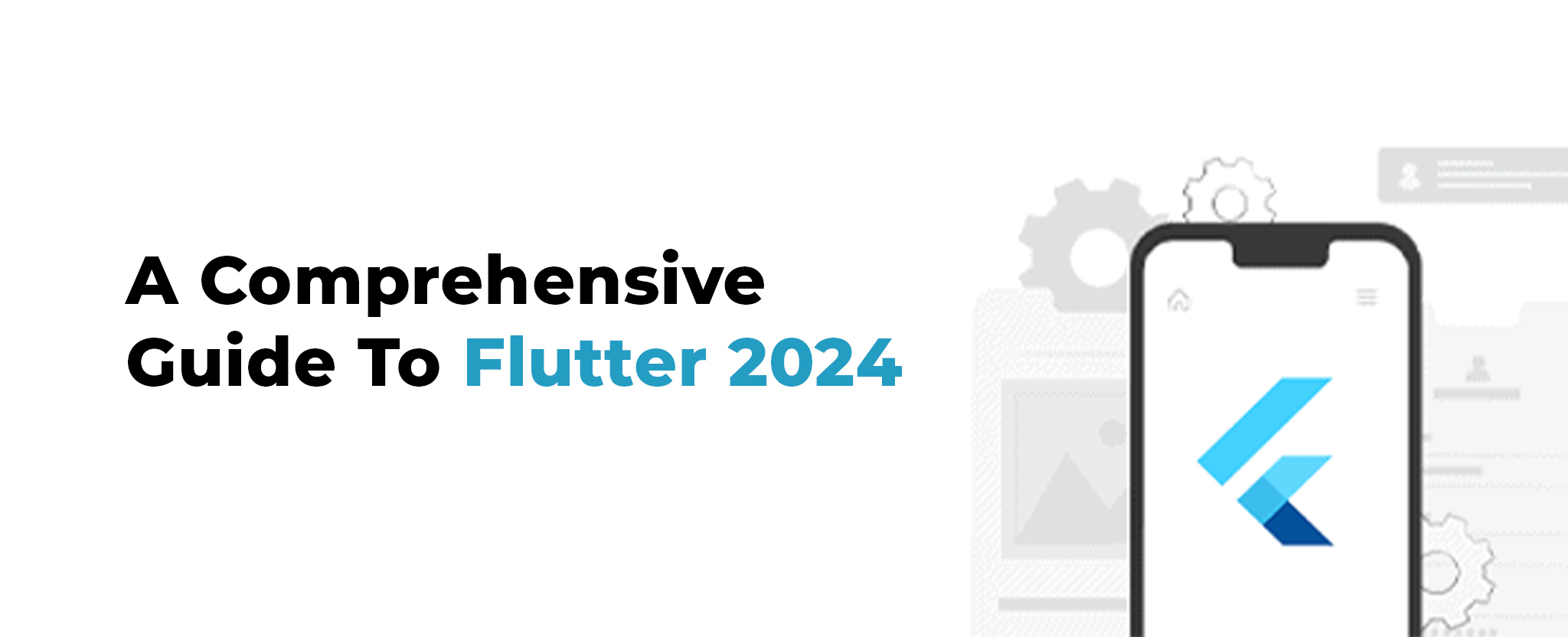






Comments